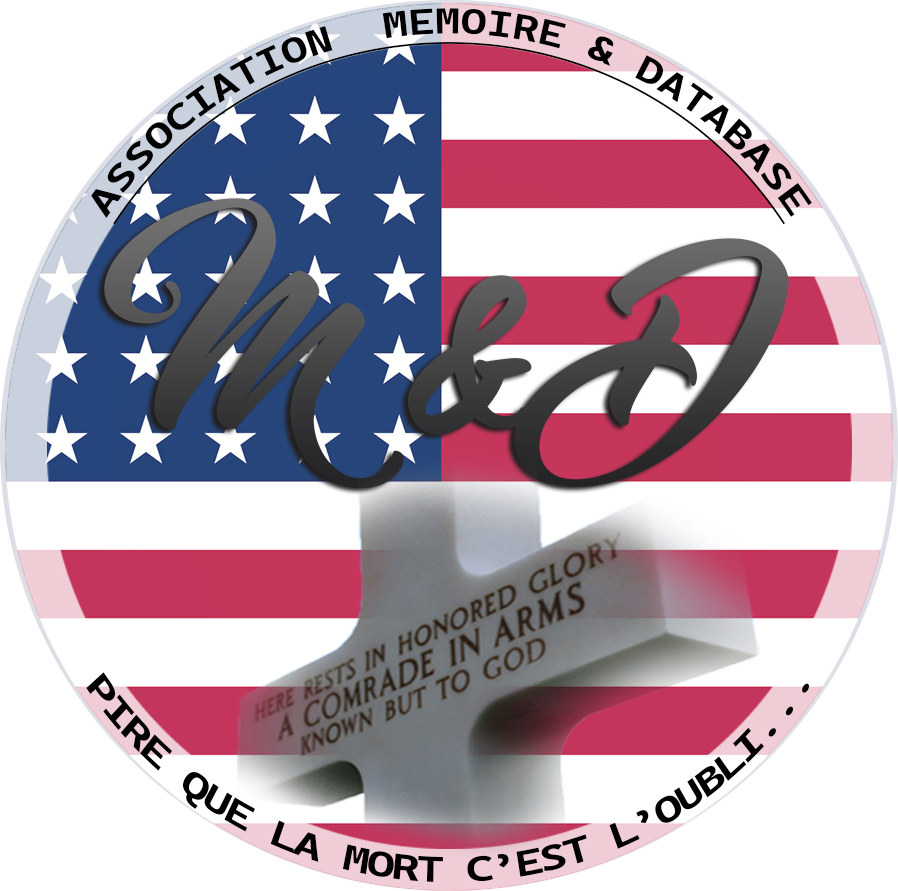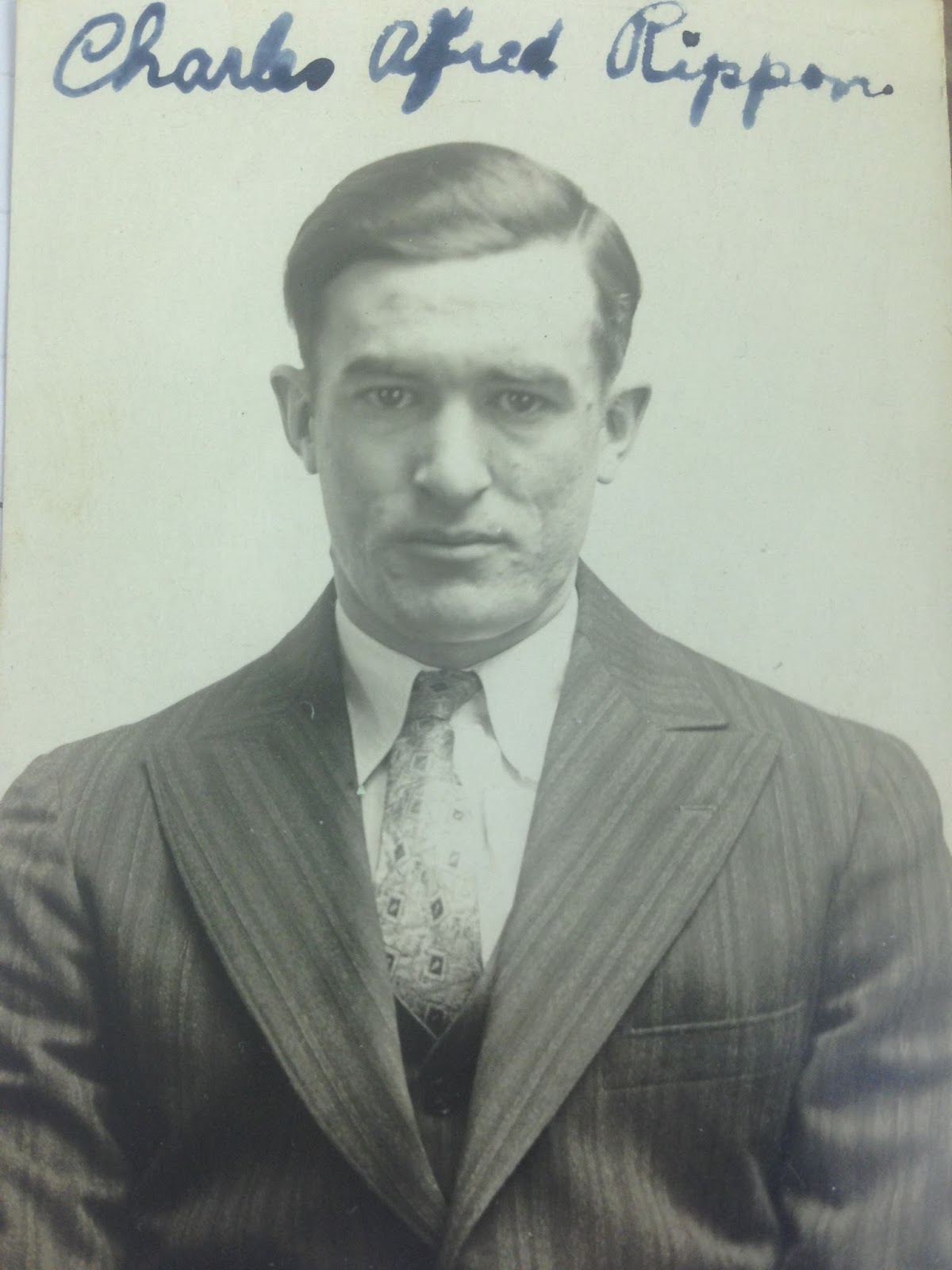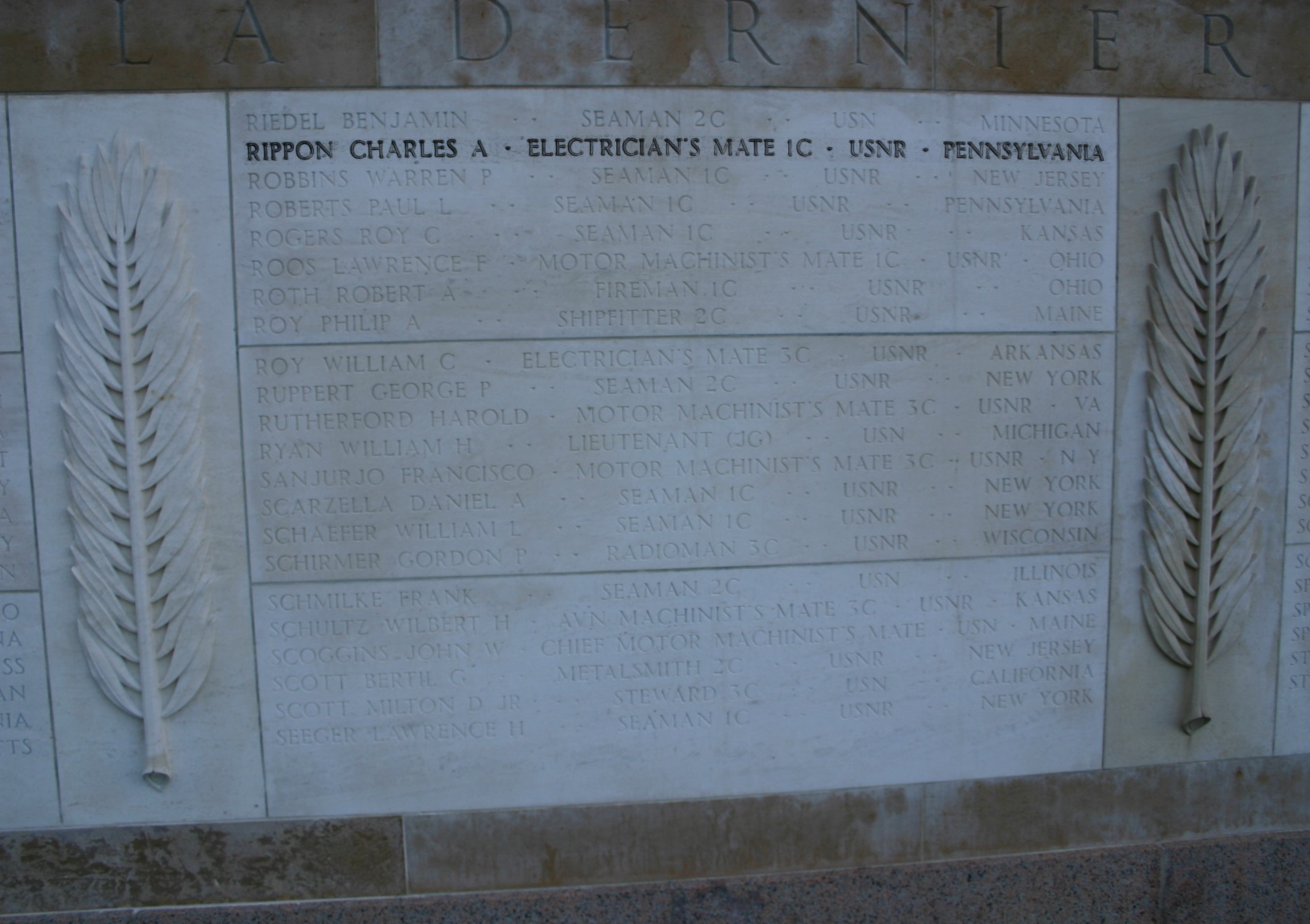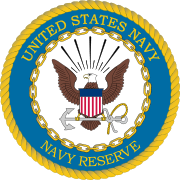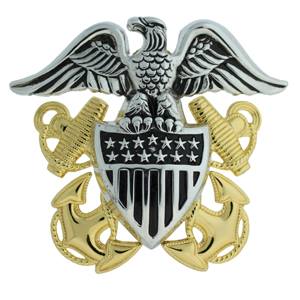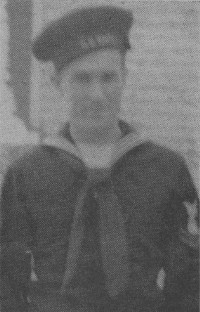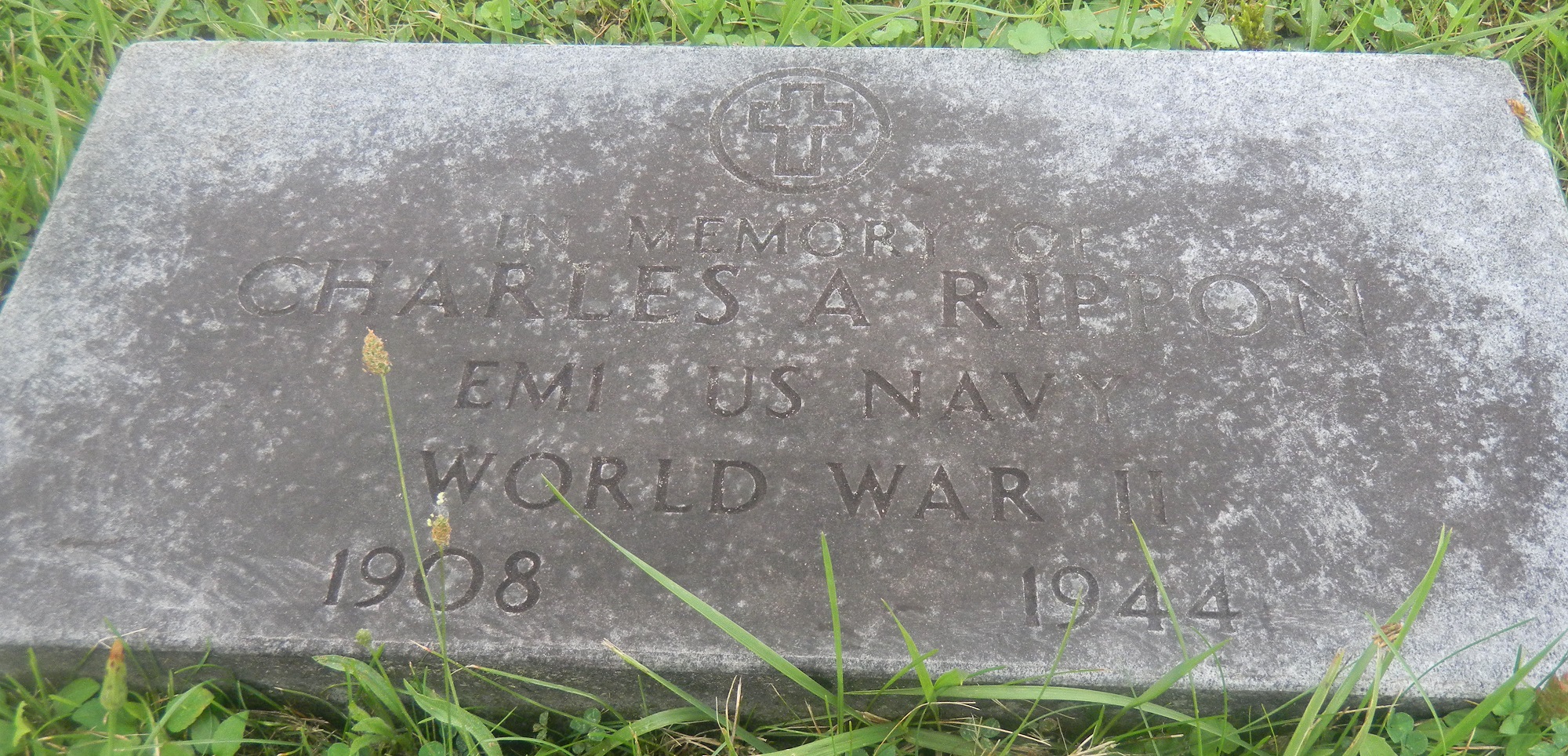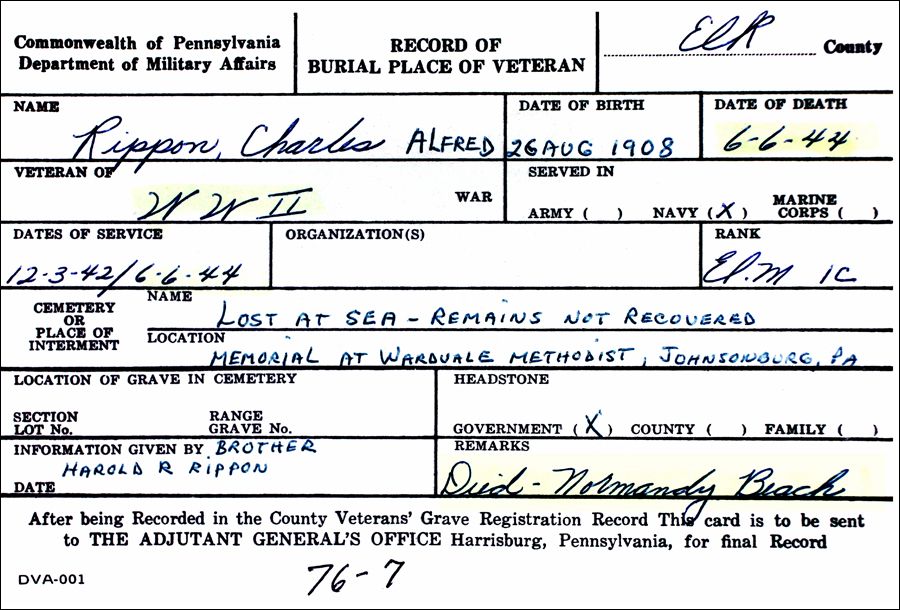|
Charles Alfred RIPPON
| |||||||
|---|---|---|---|---|---|---|---|
|
Source : Dday.org
| |||||||
| NUMBER OF SERVICE | 6089168 | ||||||
| AGE | 36 yo | ||||||
| DATE OF BIRTH | 26 August 1908 Thorne, Metropolitan Borough of Doncaster, South Yorkshire, ENGLAND | ||||||
| ENLISTMENT STATE | PENNSYLVANIA | ||||||
| FAMILY |
Parents : Edward Graystock & Anna Elizabeth Hinchcliffe RIPPON Siblings : Doris Grace, Harold Richard, James Harry & Gene Allen | ||||||
| RANK | Electrician's Mate First Class | ||||||
| FONCTION | Marin | ||||||
| JOB BEFORE ENLISTEMENT |  | ||||||
| DATE of ENLISTEMENT | 3 December 1942 | ||||||
| BOAT | LCT-458 | ||||||
| GROUP | United States Naval Reserve | ||||||
| ARMY | US Navy | ||||||
| DATE OF DEATH | 06 June 1944 |
Source : F Lavernhe | |||||
| STATUS | MIA | ||||||
| PLACE OF DEATH | Lost in Sea Utah Beach | ||||||
| CEMETERY | NORMANDY AMERICAN CEMETERY of Colleville | ||||||
| GRAVE |
| ||||||
| DECORATION |
| ||||||
| |||||||
| STORY | |||||||
|
Source : Russ Pickett
|
We’re all born…we all die. It’s an inevitable sequence of events. Between those two happenings (which as a rule we like to be as far apart as possible) we live our life. We work and play, have happy and sad moments, impact other people, make a difference in some degree. Along the way, we leave behind a legacy; that legacy is often revealed in the “paper trail” that inevitably survives us in the modern world. One of the more fulfilling aspects of working with the National D-Day Memorial Foundation is being able to take the documentary ephemera of a single life and use it to recreate a person’s story. In the archive of the Memorial (now over 10,000 items) you’ll find quite a few stories of the WWII generation preserved, just waiting for the right researcher to come along and do the detective work and reveal the hidden history. Not long ago we took time to explore and catalog a collection of letters, documents, and photos associated with Charles Albert Rippon, one of 2,499 American fatalities on D-Day. Some would look at the box of yellowed documents and faded photos and see only a hodgepodge of old paper. But we saw a legacy, a way to tell the story of an American hero, to pay tribute to a man who gave his life for his adopted nation. | ||||||
|
No one’s ever heard of Charles Rippon, so we’d like to tell you his story. It’s a story emblematic of the valor, fidelity and sacrifice of all of the D-Day participants. Charles was born August 26, 1908, in the parish of Crowle in Lincolnshire, England, to Edward Graystock and Ann Elizabeth Hinchliffe Rippon. But he spent only a few months of his infancy there. In July 1909 the family boarded the good ship Haverford at Liverpool and crossed the ocean for a better life in America. The Rippons settled in Johnsonburg, PA where Charles grew up in an idyllic American childhood, eventually with four brothers and three sisters. Like every boy in the small hometown in Elk County, he played baseball on the local Little League team, learned to fish, went to school. He graduated from Johnsonburg High in 1927; a year later his father died and presumably Charles became one of the family’s breadwinners. He worked for a local paper mill and supported his mother and siblings. How much he loved his adopted nation might be deduced from the painstaking process he undertook in 1938 to become an American citizen. At that time, Britain was inching closer and closer to war, and perhaps Charles was concerned that unless he became a naturalized American, he could be drawn into British service. If so, it’s ironic that the war would eventually put him in an American uniform and ask him to lay down his life anyway. |
Source : Mark & Lynn McCuistion | ||||||
|
Source : Rich Vance | War, of course, came to the small town in 1941. Charles Rippon, like most of the patriotic men of his generation, was quick to enlist. He joined the Naval Reserve and trained as an electrician’s mate, eventually rising to the rank of EM 1/C. In the summer of 1943 he again crossed the Atlantic and returned to his native country, quipping in his first letter home to his mother that “It has taken me a long time to make the round trip.” Rippon’s frequent letters home to his mother spoke of side trips to see the sites of England and visits with long-lost relatives, but only vaguely hinted at the dangerous business that brought him to the United Kingdom. Like many a serviceman in many a war, he tried to allay mom’s fears with encouraging news and confidence that he would probably never face the enemy in combat. “This winter we will no doubt train and I doubt very seriously if we will ever see an action…they must really be pasting the Axis on the continent,” he wrote in Sept. 1943 (Italy had recently surrendered at the time and Mussolini had been deposed, although Rippon was wrong about the fighting there being conclusive or even quickly concluded). We know, if he could not directly get such info through the censors to his family at home, that Rippon and his fellow sailors were training to cross the channel as part of Operation Overlord. He was assigned to a Landing Craft Tank, LCT-458, with the assignment of delivering an artillery unit to Utah Beach. It would not be an easy task—slow moving LCT delivering tanks or big guns would be obvious targets for German fire and vulnerable to mines. Nonetheless, he remained positive and confident in his letters. In one of his last letters home, dated May 23, 1944, he referenced a recent letter from a sister about how she had to cut the grass herself. “Picture me coming home with lots of lawn to mow—oh no! After this easy life I will hire someone to cut the grass.” Sadly, it would never happen. At about 9:00 AM on June 6th, LCT-458 hit a German mine about a mile off of the French coast, sinking almost immediately in one of the greatest tragedies of the Utah Beach sector. Only three men from the naval crew survived the sinking; Rippon was not one of them. His body was never recovered and his name appears on the Wall of the Missing at the Normandy American Cemetery above Omaha Beach. The Landing Craft on which Rippon gave his life for his adopted nation was transporting Battery B of the 29th Field Artillery, 4th Infantry Division. Altogether 39 of about 60 soldiers in that battery also died. Only three soldiers on that LCT would ever return to the fight in France. The full story of what happened to LCT-458 has never been told, perhaps because there were so few survivors. We hope to uncover more of that heartrending tale through further research. Charles Albert Rippon was only one of 4,413 Allied servicemen to pay the ultimate price for the liberation of Europe from Nazi tyranny. On June 20, his brother-in-law Paul Mellander, not yet aware of what had happened, wrote to Charles “We thought of you and how busy you must be. It was something to think about when D-Day came, and [it] gives one a funny feeling when you think of the size of the undertaking and lives lost.” His sister Mabel added in the margin “I hope you’re safe and sound in Good Old England.” The letter, of course, was never delivered. It was stamped “return to sender—unclaimed” and sent back to the grieving family, who by then had received the dreaded telegram from the Secretary of War. That poignant letter is now part of our archive, helping to tell only one of the countless stories which form the tapestry of our history. | ||||||
| SOURCE INFORMATION & SOURCE PHOTO | Findagrave.com - Abmc.gov - Findagrave.com - Dday.org |
|---|---|
| PROGRAMMER | Henri, Garrett, Clive, Frédéric & Renaud |


